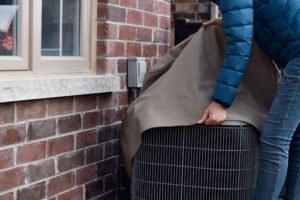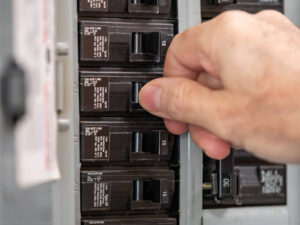If choosing to renovate an existing tub/shower combo unit, to a separate tub, and shower choosing complimentary styles, and determining size are important. Showers differ by construction, material, size, and configuration. Your main decision will be to choose between a prefabricated shower that’s installed as a unit, or a custom shower that is built in place and surfaced with tile or virtually any waterproof material.
- Prefabricated Showers: Single-piece molded fiberglass, synthetic marble, or laminate showers are relatively inexpensive, quick and simple to install, easy to clean, and watertight. One-piece showers are common in new construction because they are very quick to install and don’t have seams that could leak in the future. Unfortunately, these generally don’t work in a remodel unless one or more walls are being removed because they are too large to fit through a doorway. For most remodels, prefabricated showers with wall panels that are assembled on site work better. With these, wall panels fit over a molded shower base and are attached to a waterproofed wall. With the exception of one-piece showers, all showers begin with a base, sometimes called a receptor, or a “pan,” which can be purchased ready-made or built from scratch. Construction demands skill because the pan must be waterproof and sloped precisely to the drain, which must be set at the right height for perfect drainage. Prefabricated bases—in molded plastic, cast polymer, solid-surface composite, or poured masonry—come in various sizes and shapes and can be used with wall panels or custom surrounds. If you’re remodeling, be sure to select a prefabricated shower pan that has a drain opening that matches the existing location of your drainpipe.
- Custom Showers: A custom shower is built on the spot to whatever specifications you want. It can be a small tile enclosure built into an unusual corner, a conventional tiled shower, or something that’s really unusual, such as a stoned-lined area that’s open to the master bedroom. Basically, a custom shower needs a shower fixture, a drain, and surfaces that can handle the very wet conditions. In most cases, it also includes a curtain or a door.
- Installing a Custom Shower Pan and Tile The typical custom shower starts with a shower pan that serves as a waterproof base with an integral connection to the drain. This can be purchased as a pre-made polymer, poured-masonry, or composite unit to save time and expense, or it can be built in place. The latter should be done by a professional tile contractor or waterproofing contractor. This job requires constructing a completely waterproof, sloped membrane to protect the subfloor from water and serve as a base for tile or the like. It may be made of plywood and multiple layers like hot-mop built-up roofing, or it may consist of a soldered copper pan, built up with a cement mixture and sloped to drain, newer membranes consist of flexible PVC (polyvinyl chloride). A shower’s adjoining walls must be waterproof, too. They typically consist of wall studs covered by 15-pound builder’s felt, panels of cement backer board screwed to the studs, and a final layer of ceramic tile, slate, granite, marble, or solid surface. Showers can be equipped with such luxuries as seats, multiple spa showerheads that can give full-body massages, or steam-shower generators. Those that serve as steam showers must be specially designed to contain or ventilate the steam. Though building codes may allow a shower size as small as 32 inches square, allow at least 36 inches in each direction for comfortable movement in the enclosure.
- Steam Showers: Steam shower manufacturers are focusing on the home spa market, offering homeowners a range of products from complete steam shower units to equipment that can add steam capabilities to a conventional shower. These products offer a great way to install steam showers in residential bathrooms for the ultimate in comfort and luxury. Steam showers are typically small, enclosed rooms with a vapor-tight door that is equipped with a steam shower generator. The steam generator heats water to a boil and then delivers the resulting vapor into the enclosed room. The room’s walls, ceiling, and floor must be made of a material that is impervious to the hot, moist vapor. A seat or bench gives you a place to relax while you enjoy bathing in the steam. In addition, nearly all steam showers are also regular showers with water controls and one or more shower heads.

Bathtubs have personalities. Freestanding and clawfoot types will boldly occupy a favored position in the bathroom. Alcove, drop-in and corner tubs are nestled against walls and integrated into the overall scheme.
Three-wall alcove tub-shower combinations are the most common tub type and are designed to maximize space.The unfinished ends usually get sandwiched between an exterior wall and a handy built-in storage cabinet.
A wall-mounted shower is a typical accompaniment.
Drop-in tubs are the tub shell only. They’re fitted inside a framed enclosure that’s finished to match bathroom cabinets or tile. An enclosure is a separate item, so budget accordingly.
Undermounts are drop-ins destined for floor-level installation. Flooring, such as tile, covers the lip of the tub.
Corner tubs are variations on the alcove and drop-in designs. Their large, squarish proportions are conducive to dual bathing.
Freestanding tubs feature a sculpted bathing bowl on a solid base or a cradle.
Clawfoot tubs invoke images of a grand Elizabethan era of soaking. The signature legs support tubs that are especially deep. “Slipper”-type designs feature a high back for supporting the head and neck.
- Jets and bubbles The whirlpool tub lives on, abetted by: in-line heaters that warm water as it circulates, preventing heat loss silent motor technology that greatly reduces the sound of the jets multi-speed settings to adjust the vigor of the jets foot massage jets mounted on underwater footrests bubble-only jets providing warmed air throughout the tub micro-bubble jets that fill the tub with champagne-like effervescence
- Chromatherapy Underwater LED lights change color to suit your mood. From peaceful pink to soothing blue, the choice is yours.
- Music Resonant speaker panels attached to the tub send sound through the water so you can feel the vibrations on your skin. Sync to the playlists you have on your computer.
- Digital controls Make it all happen with a built-in touch pad—control temperature, jet direction and flow, color and music.
- ADA compliant Common sense guidelines from the Americans with Disabilities Act make tubs safe for everyone. They include non-slip floor surfaces and wide edges for sitting and easing into the tub. Walk-in tubs are especially designed for those with limited mobility. A hinged door allows easy access, then seals shut while the tub fills.
CONSTRUCTION AND COSTS:
Tubs are made from many different materials, and most are available in all styles. Prices are all over the map, depending on the features you choose.
For example, a standard acrylic alcove tub starts at about $500. Add lights, heated bubbles, televisions, aromatherapy, and digital controls to a drop-in acrylic unit and the price can get upwards of $18,000.
- Acrylic, fiberglass and Vikrell In general, these are the least expensive options, readily available at home improvement centers. Wide selection of colors.
- Cast-iron Enamel finish offers many cool colors. Heavy cast-iron is a great heat sink, keeping bath water warm for long periods. Usually in the mid-price range, but you’ll need a couple of stout deliverymen.
- Copper The ultimate in fine bathroom couture. You’ll invite people over just to look at your tub.
- Enameled steel Moderately priced tubs with a well-deserved reputation for toughness that includes resistance to scratching and staining. Color choices are usually limited.
- Stone, wood, and volcanic ash Yes, it’s possible to have a tub carved from a block of travertine, limestone and other natural rocks. Or, fashioned of laminated walnut, pear, mahogany and others. Freestanding only to show off those amazing materials.
TOILETS:
When purchasing a new toilet there are many options, and things to keep in mind. Options include different heights, bowl shapes, styles, and flushing technologies. The best toilets also save water while still delivering worry-free performance. It’s also important to remember that just because your toilet is “broken,” doesn’t mean it can’t be repaired. Purchasing a new toilet doesn’t have to be your only option in some circumstances.
- Water-saving technology Toilets are flushing away about 30 percent of all residential water in U.S. homes, so it’s not surprising that water conservation remains a major issue. A 1995 U.S. Department of Energy standard limits new toilets to 1.6 gallons per flush. But while some low-flow models work well, others do not. That’s because to comply with the federal regulations on toilets’ water use, some manufacturers initially reduced the volume of water that discharges from the tank, without also making the necessary design adjustments. New designs have improved the performance of many models, but some still do not flush thoroughly.
- Gravity-flush toilets These are conventional toilets for residential use that have been engineered to use less water. When you press the knob, a flush valve opens and the water in the tank drains into the bowl through rim openings and a siphon jet. The force of the water pushes the waste through the trap and down the drainpipe. While they are usually less effective at removing solid waste than pressure-assist toilets (described below), gravity-flush toilets are generally less expensive and easier to maintain, because most use standard parts.
- Pressure-assist toilets Best suited for commercial use or in homes with poor drainpipe carry, these models use the pressure of the water supply to the toilet to compress air in an inner tank. When you flush the toilet, pressurized water is forced into the bowl, blasting waste down the drainpipe. Pressure-assist toilets have a distinctive whoosh sound that’s much louder than gravity-flush toilets, but they are more effective in removing solid waste.
Proudly Serving the Community
We’re proud to offer dependable HVAC and plumbing services throughout NC, including:
- Jamestown
- Greensboro
- Winston-Salem
- High Point
- Summerfield
- Oak Ridge
- Forsyth County
- Guilford County
- Davidson County
Contact us today to schedule an appointment!











